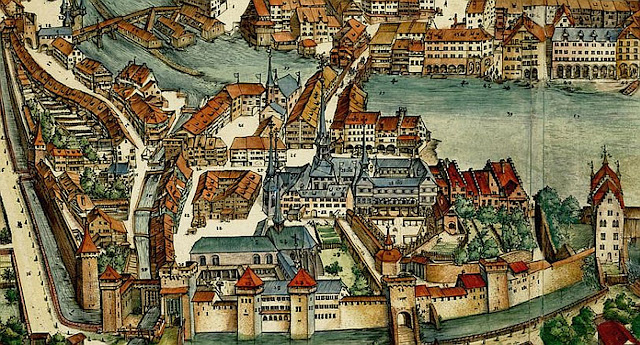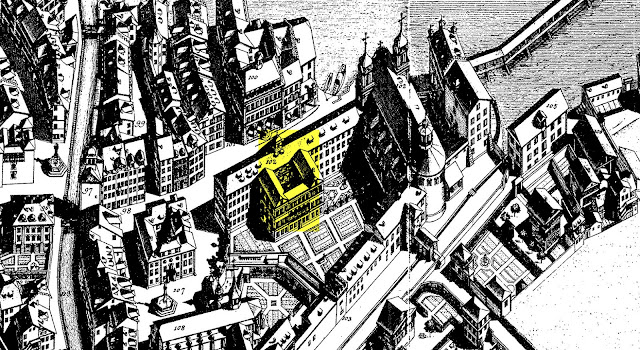 |
| Ritterscher Palace Luzern |

Lux Ritter got very rich with mercenary and intended to build a house in the style of the Florentine Renaissance with heavy blocks and nice stone masonry work.
This style was already 100 years old in Florence, but it was new for Lucerne. Lux Ritter attracted crowds of builders from the South, who built an incomparable
house that is preserved for centuries.
Lucerne had no more than 5,000 inhabitants at that thime and most of the houses were made of wood. There were only a few private stone houses, such as the still existing Zur Gilgen House or the long-demolished Hertenstein House, which was decorated with frescoes by Hans Holbein.
A widely famous stonemason of this time was Giovanni Lyn, aka Hans of Trient. He was reluctant to get engaged by Lux Ritter. His fervid faith, however, became a disaster for him. He was accused of heresy, found guilty, and beheaded.
On the day of his execution Hans von Trient accursed Lux Ritter. A few days later, coincidence or not, Lux Ritter died.
(For further information read the story of Hans of Trient from the Wickiana).
At that time the three-storey palace with an open courtyard was completed by about two-thirds. The heirs of Lux Ritter were not able to carry on the construction. The house was taken over by the city of Lucerne and finished.
Then the time of Ludwig Pfyffer of Althishofen had come. He became the most powerful man of Lucerne. He ruled like a prince and was given the nick name "Swiss King."
In 1578, Ludwig Pfyffer of Altishofen handed over the building to the Jesuits, whom he had called to Lucerne. They built a church on the ground floor, as you can see on the Martiniplan.
Later this church was given up for the Jesuit Church. On the copper engraving of Martin Martini you can also see, that courtyard was open to the south at that time.
 |
| Martini Plan 1597, section with Ritterscher Palace. |
 |
| Schumacherplan 1790, section with Ritterscher Palace and Jesuit Church of 1677. |
After the Sonderbundskrieg of 1847 (Reformation War), the Jesuits were exiled from Lucerne and Switzerland. Everything in Lucerne that belonged to the Jesuits fell to the Canton of Lucerne. Thus the Ritterscher Palace turned into the Cantonal Government Building of the Canton of Luzern.
 |
| Ritterscher Palace with attached parliament building and covered courtyard - © google maps |
 |
| Main Gate |
Generally speaking the building is open to the public from Monday to Friday. However it can be closed anytime for governmental events or state receptions. The admission is free.
When you visit the building, please respect the fact that behind the doors in the inner courtyard there are offices of the Cantonal Administration, where people are working. Please don't be loud.
For a guided tour including an inside visit to the Ritterscher Palace please refer to nightwatchman's medieval city walk. (seasonal regular tour)


